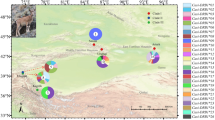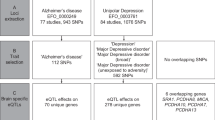Abstract
Primary cutaneous amyloidosis (PCA) is an itchy skin disorder associated with amyloid deposits in the superficial dermis. The disease is relatively common in Southeast Asia and South America. Autosomal dominant PCA has been mapped earlier to 5p13.1–q11.2 and two pathogenic missense mutations in the OSMR gene, which encodes the interleukin-6 family cytokine receptor oncostatin M receptor beta (OSMRβ), were reported. Here, we investigated 29 Taiwanese pedigrees with PCA and found that 10 had heterozygous missense mutations in OSMR: p.D647V (one family), p.P694L (six families), and p.K697T (three families). The mutation p.P694L was associated with the same haplotype in five of six families and also detected in two sporadic cases of PCA. Of the other 19 pedigrees that lacked OSMR pathology, 8 mapped to the same locus on chromosome 5, which also contains the genes for 3 other interleukin-6 family cytokine receptors, including interleukin-31 receptor A (IL31RA), which can form a heterodimeric receptor with OSMRβ through interleukin-31 signaling. In one family, we identified a point mutation in the IL31RA gene, c.1562C>T that results in a missense mutation, p.S521F, which is also sited within a fibronectin type III-like repeat domain as observed in the OSMR mutations. PCA is a genetically heterogeneous disorder but our study shows that it can be caused by mutations in two biologically associated cytokine receptor genes located on chromosome 5. The identification of OSMR and IL31RA gene pathology provides an explanation of the high prevalence of PCA in Taiwan as well as new insight into disease pathophysiology.
Similar content being viewed by others
Log in or create a free account to read this content
Gain free access to this article, as well as selected content from this journal and more on nature.com
or
References
Wong CK : Lichen amyloidosus: a relatively common skin disorder in Taiwan. Arch Dermatol 1974; 110: 438–440.
Ollague W, Ollague J, Ferretti H : Epidemiology of primary cutaneous amyloidoses in South America. Clin Dermatol 1990; 8: 25–29.
Tan T : Epidemiology of primary cutaneous amyloidoses in Southeast Asia. Clin Dermatol 1990; 8: 20–24.
Wong CK, Lin CS : Friction amyloidosis. Int J Dermatol 1988; 27: 302–307.
Chang YT, Wong CK, Chow KC, Tsai CH : Apoptosis in primary cutaneous amyloidosis. Br J Dermatol 1999; 40: 210–215.
Chang YT, Liu HN, Wong CK, Chow KC, Chen KY : Detection of Epstein-Barr virus in primary cutaneous amyloidosis. Br J Dermatol 1997; 136: 823–826.
Porto JA, Posse FA : Amiloidose cutanea genuina familial. Bol Da Soc Brasil Dermatol E Sif 1960; 35: 102–103.
de Souza AR : Amiloidose cutanea bohlosa familial. Observacao de 4 casos. Rev Hosp Clin Fac Med S Paolo 1963; 18: 413–417.
Sagher F, Shanon J : Amyloidosis cutis. Arch Dermatol 1963; 87: 171–175.
Tay CH : Genodermatoses in Singapore – a genetic study of certain skin diseases. Asian J Med 1971; 7: 413–422.
Rajagopalan K, Tay CH : Familial lichen amyloidosis. Report of 19 cases in 4 generations of a Chinese family in Malaysia. Br J Dermatol 1972; 87: 123–129.
Vasily DB, Bhatia SG, Uhlin SR : Familial primary cutaneous amyloidosis. Arch Dermatol 1978; 114: 1173–1176.
de Pietro WP : Primary familial cutaneous amyloidosis. Arch Dermatol 1981; 117: 639–642.
Ozaki M : Familial lichen amyloidosis. Int J Dermatol 1984; 23: 190–193.
Newton JA, Jagjivan A, Bhogal B, McKee PH, McGibbon DH : Familial primary cutaneous amyloidosis. Br J Dermatol 1985; 112: 201–208.
Lee DD, Huang JY, Wong CK, Gagel RF, Tsai SF : Genetic heterogeneity of familial primary cutaneous amyloidosis: lack of evidence for linkage with the chromosome 10 pericentromeric region in Chinese families. J Invest Dermatol 1996; 107: 30–33.
Bergamo F, Annessi G, Ribuffo M : Familial lichen amyloidosis. Chron Dermatol 1997; 6: 959–961.
Hartshorne ST : Familial primary cutaneous amyloidosis in a South African family. Clin Exp Dermatol 1999; 24: 438–442.
Wang WJ, Chang YT, Huang CY, Lee DD : Clinical and histopathological characteristics of primary cutaneous amyloidosis in 794 Chinese patients. Zhonghua Yi Xue Za Zhi (Taipei) 2001; 64: 101–107.
Lin MW, Lee DD, Lin CH et al: Suggestive linkage of familial primary cutaneous amyloidosis to a locus on chromosome 1q23. Br J Dermatol 2005; 152: 29–36.
Lee DD, Lin MW, Chen IC et al: Genome-wide scan identifies a susceptibility locus for familial primary cutaneous amyloidosis on chromosome 5p13.1-q11.2. Br J Dermatol 2006; 155: 1201–1208.
Arita K, South AP, Hans-Filho G et al: Oncostatin M receptor-β mutations underlie familial primary localized cutaneous amyloidosis. Am J Hum Genet 2008; 82: 73–80.
Scheller J, Ohnesorge N, Rose-John S : Interleukin-6 trans-signalling in chronic inflammation and cancer. Scand J Immunol 2006; 63: 321–329.
Heinrich PC, Behrmann I, Haan S, Hermanns HM, Muller-Newen G, Schaper F : Principles of interleukin (IL)-6-type cytokine signalling and its regulation. Biochem J 2003; 374: 1–20.
Stephens M, Sloan JS, Robertson PD, Scheet P, Nickerson DA : Automating sequence-based detection and genotyping of SNPs from diploid samples. Nat Genet 2006; 38: 375–381.
The International HapMap Consortium: The International HapMap Project. Nature 2003; 426: 789–796.
Lathrop GM, Lalouel JM, Julier C, Ott J : Multilocus linkage analysis in humans: detection of linkage and estimation of recombination. Am J Hum Genet 1985; 37: 482–498.
Kruglyak L, Daly MJ, Reeve-Daly MP, Lander ES : Parametric and nonparametric linkage analysis: unified multipoint approach. Am J Hum Genet 1996; 58: 1347–1363.
Barrett JC, Fry B, Maller J, Daly MJ : Haploview: analysis and visualization of LD and haplotype maps. Bioinformatics 2005; 21: 263–265.
Zhao JH, Lissarrague S, Essioux L, Sham PC : GENECOUNTING: haplotype analysis with missing genotypes. Bioinformatics 2002; 18: 1694–1695.
Zhao JH : 2LD, GENECOUNTING and HAP: computer programs for linkage disequilibrium analysis. Bioinformatics 2004; 20: 1325–1326.
Kurth I, Horsten U, Pflanz S et al: Importance of the membrane-proximal extracellular domains for activation of the signal transducer glycoprotein 130. J Immunol 2000; 164: 273–282.
Timmermann A, Küster A, Kurth I, Heinrich PC, Müller-Newen G : A functional role of the membrane-proximal extracellular domains of the signal transducer gp130 in heterodimerization with the leukemia inhibitory factor receptor. Eur J Biochem 2002; 269: 2716–2726.
Dillon SR, Sprecher C, Hammond A et al: Interleukin 31, a cytokine produced by activated T cells, induces dermatitis in mice. Nat Immunol 2004; 5: 752–760.
Boniface K, Diveu C, Morel F et al: Oncostatin M secreted by skin infiltrating T lymphocytes is a potent keratinocyte activator involved in skin inflammation. J Immunol 2007; 178: 4615–4622.
Sonkoly E, Muller A, Lauerma AI et al: IL-31: a new link between T cells and pruritus in atopic skin inflammation. J Allergy Clin Immunol 2006; 117: 411–417.
Morikawa Y, Tamura S, Minehata K-i, Donovan PJ, Miyajima A, Senba E : Essential function of oncostatin M in nociceptive neurons of dorsal root ganglia. J Neurosci 2004; 24: 1941–1947.
Tamura S, Morikawa Y, Miyajima A, Senba E : Expression of oncostatin M receptor in a specific subset of nociceptive sensory neurons. Eur J Neurosci 2003; 617: 2287–2298.
Chattopadhyay S, Tracy E, Liang P, Robledo O, Rose-John S, Baumann H : Interleukin-31 and oncostatin-M mediate distinct signaling reactions and response patterns in lung epithelial cells. J Biol Chem 2007; 282: 3014–3026.
Acknowledgements
We thank Dr Tsung-Sheng Su for critical reading of the manuscript, the patients, and members of the PCA families who participated in this study, Ms Li-Ru Chen, Ms Ying-Chen Chang, and Ms Ying-Yen Weng for excellent technical support, and the staff of the Department of Dermatology, Taipei Veterans General Hospital, for referral of PCA subjects. This work was supported in part by grants VGH 93-354, VGHUST94-P1-14, NSC94-3112-B-010-019, NSC95-3112-B-010-001, NSC96-3112-B-010-001, NSC97-2314-B-010-016-MY2, and a grant from The Ministry of Education, Taiwan, Aim for the Top University Plan. The linkage analysis server was supported by grants VGH 94-368-2, V95S2-003, and V96S2-005. The sequencing services and Affymetrix 10K SNP assays were provided by the Sequencing Core Facility and Gene Expression Core Facility of the National Research Program for Genomic Medicine supported by grants from the National Science Council, Taiwan, respectively. Studies on PCA in the UK were kindly supported by a grant from Action Medical Research.
Author information
Authors and Affiliations
Corresponding authors
Additional information
Supplementary Information accompanies the paper on European Journal of Human Genetics website (http://www.nature.com/ejhg)
Rights and permissions
About this article
Cite this article
Lin, MW., Lee, DD., Liu, TT. et al. Novel IL31RA gene mutation and ancestral OSMR mutant allele in familial primary cutaneous amyloidosis. Eur J Hum Genet 18, 26–32 (2010). https://doi.org/10.1038/ejhg.2009.135
Received:
Revised:
Accepted:
Published:
Issue date:
DOI: https://doi.org/10.1038/ejhg.2009.135
Keywords
This article is cited by
-
Cloning, expression, purification, and immunoblotting analysis of recombinant type III fibronectin domains of human oncostatin M receptor
Molecular Biology Reports (2023)
-
IL-31 Inhibition as a Therapeutic Approach for the Management of Chronic Pruritic Dermatoses
Drugs (2021)
-
Primary Localized Cutaneous Amyloidosis of Keratinocyte Origin: An Update with Emphasis on Atypical Clinical Variants
American Journal of Clinical Dermatology (2021)
-
A ligand-based system for receptor-specific delivery of proteins
Scientific Reports (2019)
-
Interleukin-31-mediated photoablation of pruritogenic epidermal neurons reduces itch-associated behaviours in mice
Nature Biomedical Engineering (2018)



